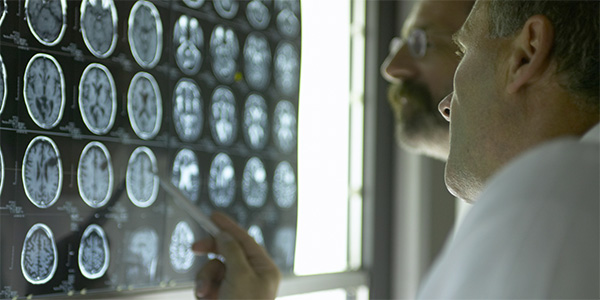Pediatric Craniosynostosis Program
Contact Us
(407) 839-8407Quick Scheduling with a Pediatric Craniosynostosis Specialist
Enjoy comprehensive service and award-winning healthcare. Submit an appointment request today, and our staff will follow up with you shortly to confirm a time that works for you and your family.

The Highest Level of Craniosynostosis Care
If you or your child’s pediatrician suspects your child’s head or skull isn’t forming normally, Orlando Health Arnold Palmer Hospital for Children can help. The first step in your child’s care is getting an accurate diagnosis from a pediatric craniomaxillofacial surgeon or pediatric neurosurgeon because children with an abnormal skull shape can infrequently have an abnormality of the skull known as craniosynostosis; if left untreated, this condition can sometimes lead to pressure inside the head and begin to cause symptoms.
While a diagnosis of craniosynostosis may be worrisome and at times feel overwhelming, remember you’re not alone. We’ll be here to support you and your family throughout your child’s entire treatment and recovery. Our pediatric craniofacial surgery team understands the impact craniosynostosis can have on your child’s appearance and development, and is dedicated to delivering the highest quality care and personal attention to your child.
In fact, all our care and treatment will be tailored to your child and family. We’ll work closely with your regular pediatrician and a team of experts offering comprehensive testing and treatment for craniosynostosis (including our pediatric neurosurgeons who regularly perform complex craniofacial operations).
Pediatric Craniosynostosis FAQs
We understand that when your child is diagnosed with craniosynostosis, you’re going to have a lot of questions. Feeling overwhelmed and confused is normal. Learning more about your child’s condition can address some of your concerns, and help you better understand what to expect before, during and after your child’s treatment.
What is pediatric craniosynostosis?
A child’s skull development begins when several separate bones join together throughout the early part of his or her life. The places where these early bones meet are known as “sutures,” and these sutures are important to ensure the normal shape and development of the head. When one of these sutures is missing, it results in a condition known as “craniosynostosis” and changes the shape of the head.
Why are there different types of craniosynostosis?
Since there are six major sutures in an infant’s skull, there are different types of craniosynostosis that can have varying impacts on a child’s head shape depending on which suture(s) is involved. Most often, only one suture is involved, and there is no known specific genetic cause responsible. Less commonly, specific gene mutations can cause multiple sutures to be missing. These infants have a more severe form of abnormal head shape and deficiency of the bones around the eyes and middle of the face. Depending on the genetic findings and exam, these children may be diagnosed as having Crouzon, Apert, Meunke, Pfeiffer or Saethre-Chotzen syndromes, among others.
How is craniosynostosis diagnosed?
A pediatric craniofacial or pediatric neurosurgery physician can make an accurate diagnosis based on an examination of your child’s head and skull. A computed tomography (CT) scan of your child’s head can confirm the absence of one or more sutures and may be helpful for planning surgery. When more than one suture is missing or other abnormalities are present, an evaluation by a pediatric geneticist can be useful to inform further testing and support.
What treatment is needed?
Treatment for craniosynostosis typically requires surgery before your child’s first birthday and monitoring throughout early childhood. Surgery is performed to correct abnormalities of the skull. In craniosynostosis where only one suture is affected, most often only one surgery is required. After surgery, regular care by an ophthalmologist (eye doctor) is always recommended.
With syndromic synostosis, a staged surgical approach is necessary. The initial surgery will occur during the first year of life to address abnormalities of head shape and eye orbits. Surgery in early childhood will further address the orbits and middle face, and surgery as a teenager will correct any problems with jaw size abnormalities. However, it’s important to remember that surgery is only one part of a comprehensive approach that must include regular care with many medical specialties, dental experts and therapists. Our Pediatric Craniofacial Program team will work with your child’s pediatrician to help you coordinate care.








